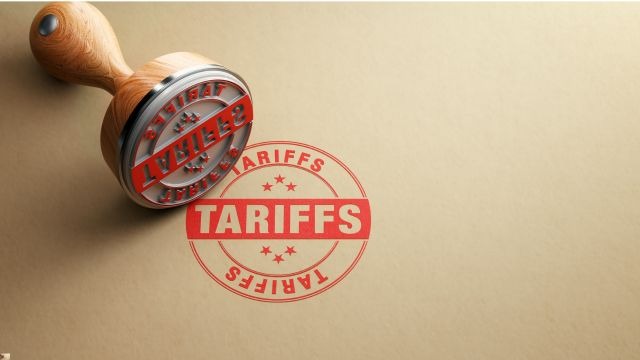President Trump has argued that the tariffs are necessary to rectify “unfair trade practices” by US trading partners. Only a few days before the new tariffs are to take effect, it is unclear which countries will be affected and what will be the extent of the tariffs. It is not surprising that this uncertainty has the financial markets deeply worried. The US stock market declined sharply last Friday in response to the tariff threat, as well as on concerns over high inflation and weak consumer confidence numbers.
Trump has threatened to impose the following tariffs on US trading partners:
Reciprocal Tariffs
These are “counter tariffs” which the Trump has threatened to impose on April 3, in response to tariffs which other countries have applied on US exports. The US could impose these tariffs on a range of countries, notably China, Canada, Mexico and the European Union. The Trump administration hasn’t specified the rates of the reciprocal tariffs or which countries will be included and investors will be looking for clues ahead of April 3. A recent media report (based on anonymous sources) claimed that the European Union would face a flat, double-digit tariff which could be as high as 20%-25%.
Target Sectors
The US has threatened to target specific industries with tariffs, possibly in April. There are five industries that would be affected – (1) steel and aluminum, (2) automobiles, (3) lumber, (4) semiconductors, and (5) pharmaceuticals. Trump said last week that these tariffs would take effect “down the road”. Trump isn’t expected to impose these tariffs on April 3, but he could provide more details about these tariffs at that time.
US-Mexico-Canada Free Trade Agreement
Officials in Canada and Mexico will be anxiously waiting to see what Trump does on April concerning goods that are compliant with the free trade agreement between the US, Mexico and Canada (USMCA). Trump has slapped tariffs on both Canada and Mexico but suspended tariffs on goods which were compliant with USMCA until April 2. US tariffs on Canada and Mexico have already disrupted trade in one of the largest free-trade zones in the world, which will dampen growth in all three countries. If Trump hits Canada and Mexico with 25% tariffs on automobiles and automobile parts, it will upend free trade in North America and lead to higher prices for automobiles for US consumers.
Tariff Fears Have Sent Stock Markets Tumbling
There is a lot of confusion in the air and as we know, the markets hate uncertainty. Only a few days before the new tariffs are to take effect, it is unclear which countries will be affected and what will be the extent of the tariffs. It is not surprising that the uncertainty has the financial markets deeply worried. The US stock market declined sharply this past Friday and again today in response to the tariff threat, as well as on concerns over high inflation and weak consumer confidence numbers.
What Can we Expect from Financial Markets?
The reaction of the financial markets will largely depend on what tariffs, if any, Trump announces on April 2. The markets are in a selling mood, and if Trump announces wide-ranging tariffs on a host of countries the selling wave is likely to continue. If Trump goes ahead with the tariffs but extends an olive branch to negotiations and hints that the tariffs could be suspended, investors will likely respond positively, and we could see the markets stabilize. The best-case scenario for the markets is that Trump retreats and announces that he is suspending the threatened tariffs, but he has given every indication that he plans to impose the tariffs as promised.
The direction of the financial markets in the coming days will also depend on the response of countries which have been hit by the tariffs. If those countries swiftly respond with counter-tariffs against the US, a global trade war is more likely and there is a strong probability that the market slide will continue. If, on the other hand, cooler heads prevail and we see a de-escalation, the markets will likely respond positively.
Turning to the Forex markets, the currencies to watch are USD, EUR, CAD, and MXN. If the tariffs are worse than expected, these currencies will likely decline, while the JPY will probably gain. If the tariffs are milder than expected, then reverse these trades. If you have a view that there will be some surprises, you could be positioned appropriately before April 2.
Conclusion
President Trump has labeled April 3 as “Liberation Day”, but there are really no winners in a trade war. It remains to be seen if Trump will make good on his threats and impose further tariffs or will the US reach agreements with its trading partners and avoid a global trade war.


